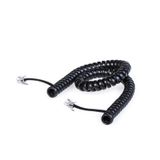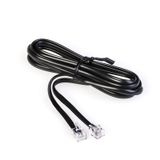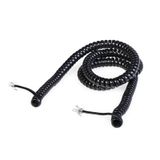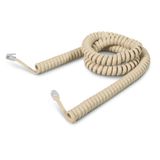Scame Ethernet cable (network)






scame lan computer network cables for campus and office floors
Project teams pick this range when they want predictable channels, tidy dressing, and clean moves/adds/changes over years of churn. Copper pairs cover outlet fields, WAP grids, and device drops; fiber handles risers and long backbones where latency, distance, or EMI margins demand it. CPR options from Eca to B2ca s1a d1 a1 keep you aligned with building fire strategies. OD ranges and bend radii sit where installers expect them, so routes share the same glands, conduits, and panels already used with Scame enclosures.
Range and series overview
Permanent links are solid-conductor, 23–24 AWG, with foil or overall screens where EMC is tough. Patch leads are stranded 26–28 AWG for repeated flexing at desks and switches. Shielding choices follow the usual ladder: U/UTP where noise is low; F/UTP or U/FTP when drives, radio gear, or long parallel power runs are nearby. For ceiling zones packed with PoE lighting or cameras, prefer larger-gauge constructions to manage heat in bundles and keep insertion loss inside limits.
scame cat5e cat6 cables categories and use
Cat5e remains the voice/legacy-data workhorse up to 1 GbE on 100 m channels. Cat6 improves headroom for 1 GbE and short 2.5/5GBASE-T spur links. Where 10 GbE is standard for uplinks, Cat6A with pair separators (U/FTP or F/FTP) controls alien crosstalk in dense trays and ladder rungs. For WAP grids and high-power PoE, Cat6A gives voltage-drop and thermal margins that keep ports stable during warm summer loads.
Technical specifications and standards
Electrical: 100 Ω ±15 Ω impedance; typical DC loop resistance 148–188 mΩ/m (category dependent); capacitance 45–52 nF/km; NVP ~67–78 %, which matters for skew when mixing patch lengths. NEXT/PS-NEXT, ACR-F, TCL, and ELTCTL comply with ISO/IEC 11801-1 and IEC 61156-5/-6; field testing to IEC 61935-1 with Level VI analyzers.
Mechanical: minimum pull tensions printed on cartons; bend radius ≥8×OD during pull and ≥4×OD in service. Ripcords speed jacket opening; separators maintain pair geometry under clamp pressure.
Fire and CPR: reaction-to-fire per EN 50575 with Eca through B2ca s1a d1 a1 options; LSZH jackets for occupied zones and escape routes.
PoE: plan for IEEE 802.3af/at/bt. In warm plenums, ventilate trays and stagger bundles; Cat6A copper keeps temperature rise and insertion loss within limits on 90 m permanent links.
Connectivity: 8P8C jacks to IEC 60603-7; IDC blocks accept 22–26 AWG solid. Factory cords are stranded with molded boots and 750–2,000 insertion cycles depending on length and jacket.
Applications and compatibility
Office floors use Cat6 for desk outlets, Cat6A for WAPs and switch uplinks. Labs and arenas lean on shielded copper or fiber where EMI and density collide. In plant rooms, metal conduits and bonded shields keep balance tight near VFDs. Field teams describe scame network wiring as “predictable to dress”: consistent OD, stable pair lay, and boots that clear high-density panels without fighting neighboring cords.
scame patch cords assembly quality and flex ratings
Short leads deserve attention. Stranded conductors reduce work-area failures; snagless boots stop latch breakage in crowded switches. Keep lengths honest: 0.3–5 m at the desk, 1–3 m in cabinets. When PoE Type 4 feeds cameras or APs, pick larger-gauge cords to limit heat and contact resistance. Technicians notice fewer intermittent links when cords are replaced on a 3–5-year cycle during MAC waves.
Integration with Scame systems
Cable OD ranges match Scame glands and multi-gang faceplates, so mixed power/data plates land cleanly with proper segregation. Enclosures share mounting geometry with industrial hardware, which helps when IDFs live next to plant services. For racks, earthing studs support shield continuity; labeling kits align with the same fonts and colors used on distribution boards, keeping audits straightforward. When temporary circuits are required for events, telecoms looms follow the same strain-relief and identification logic as the power side.
Selection criteria for B2B clients
Performance Pick Cat6 for 1 GbE user ports and PoE lighting; use Cat6A where 10 GbE, WAP density, or Type 3/4 PoE is standard.
Shielding Choose U/UTP in quiet offices; move to F/UTP or U/FTP near drives, lifts, or radio equipment, and bond screens correctly at panels.
Thermal and PoE Model bundle sizes, ambient >30 °C, and containment; ventilate and cap bundle counts in warm ceilings.
Pathways Maintain separations per EN 50174-2; cross power at 90° where trays must meet and use partitions when space is tight.
Testing Certify permanent links to category with Level VI testers; store results by room ID for clean handover and future troubleshooting.
Lifecycle Reserve spare pairs and slack in risers; size trays for another 20–30% fill to avoid re-pulls during upgrades. In design documents, refer to the campus as scame structured cabling to keep scopes unambiguous between trades.
Advantages of working with Bankoflamps
You receive project-specific pricing aligned to your outlet count and WAP plan, a named account manager, and live EU stock visibility before commitment. Quotes come back fast so cutovers and night shifts don’t slip. Orders by EAN/MPN drop straight into your ERP; downloadable price lists stay current through revisions. Your portal shows lead times and order status, with purchase-history analytics to standardise categories and patch lengths across sites. For trusted accounts we support post-payment terms up to 30 days. We coordinate consolidated shipments for multi-location drops and assign price-validity windows so phased rollouts stay predictable.